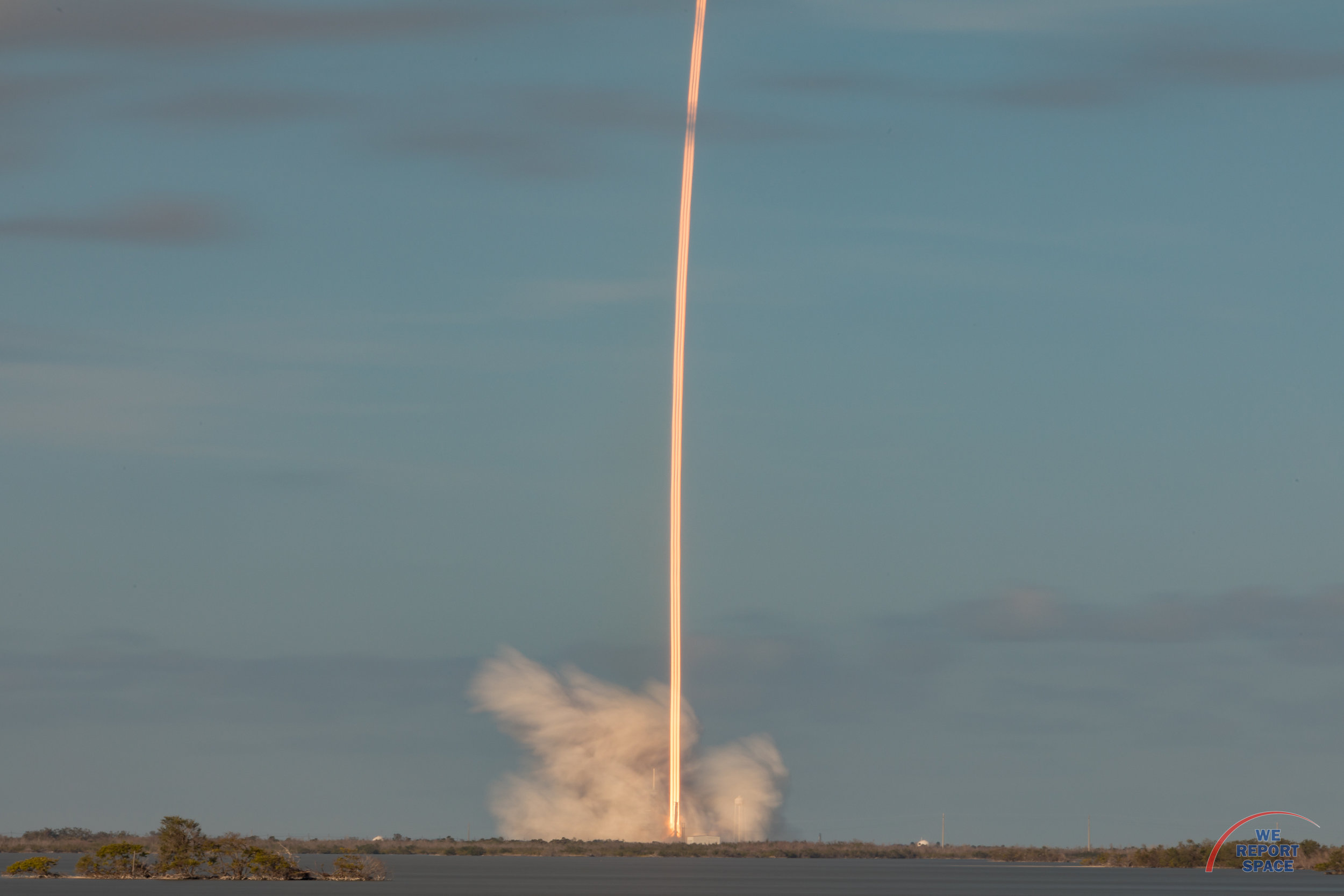

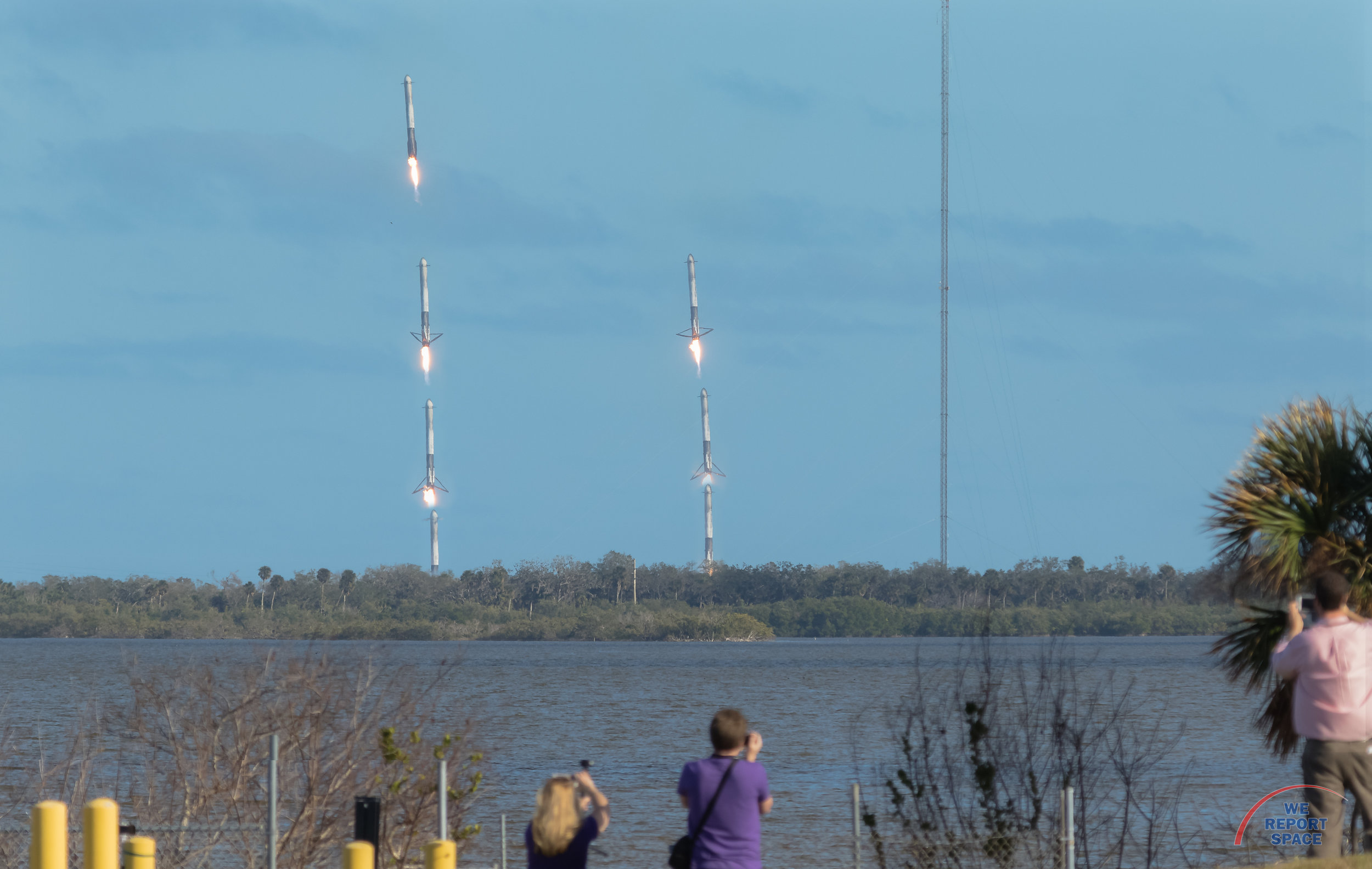
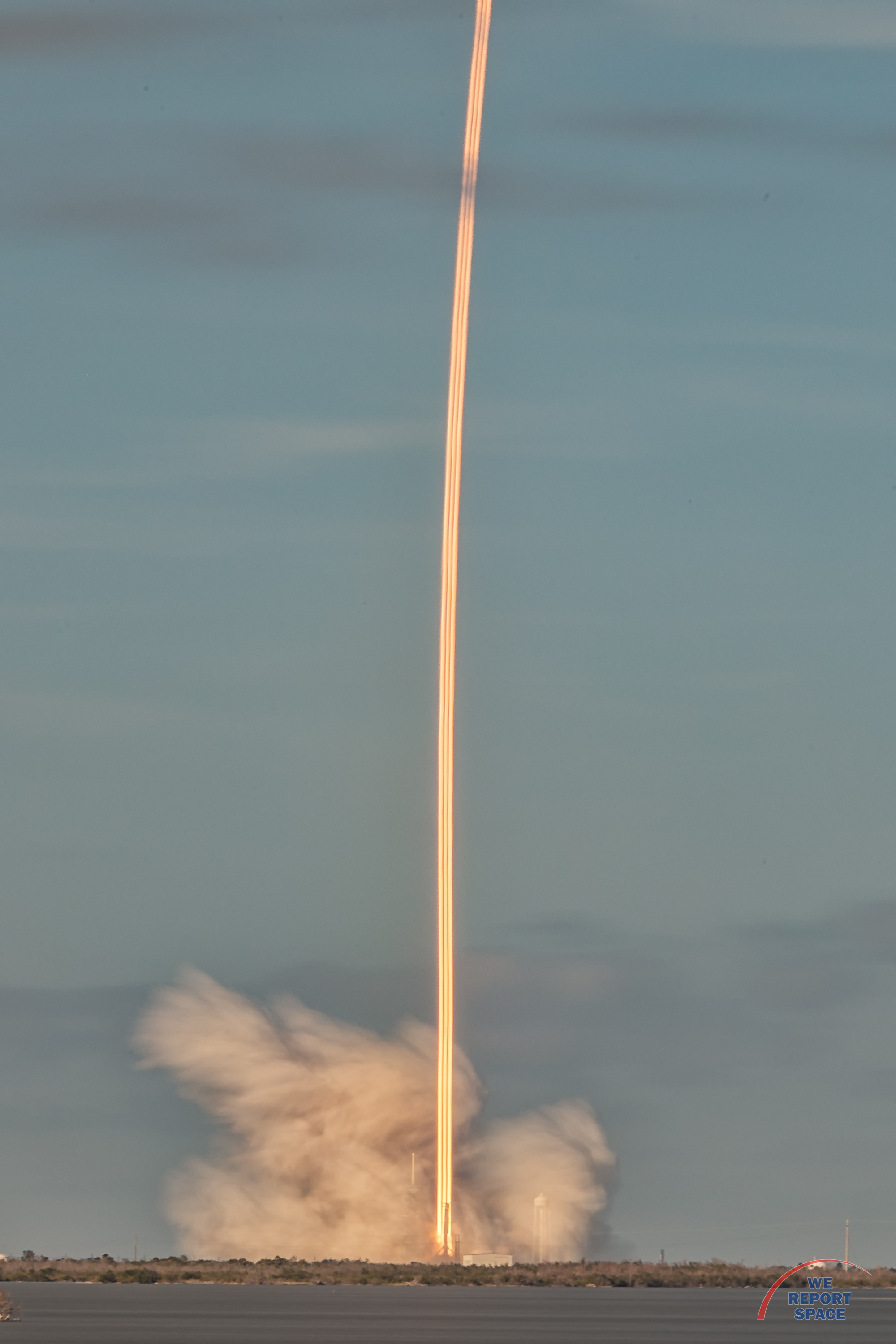
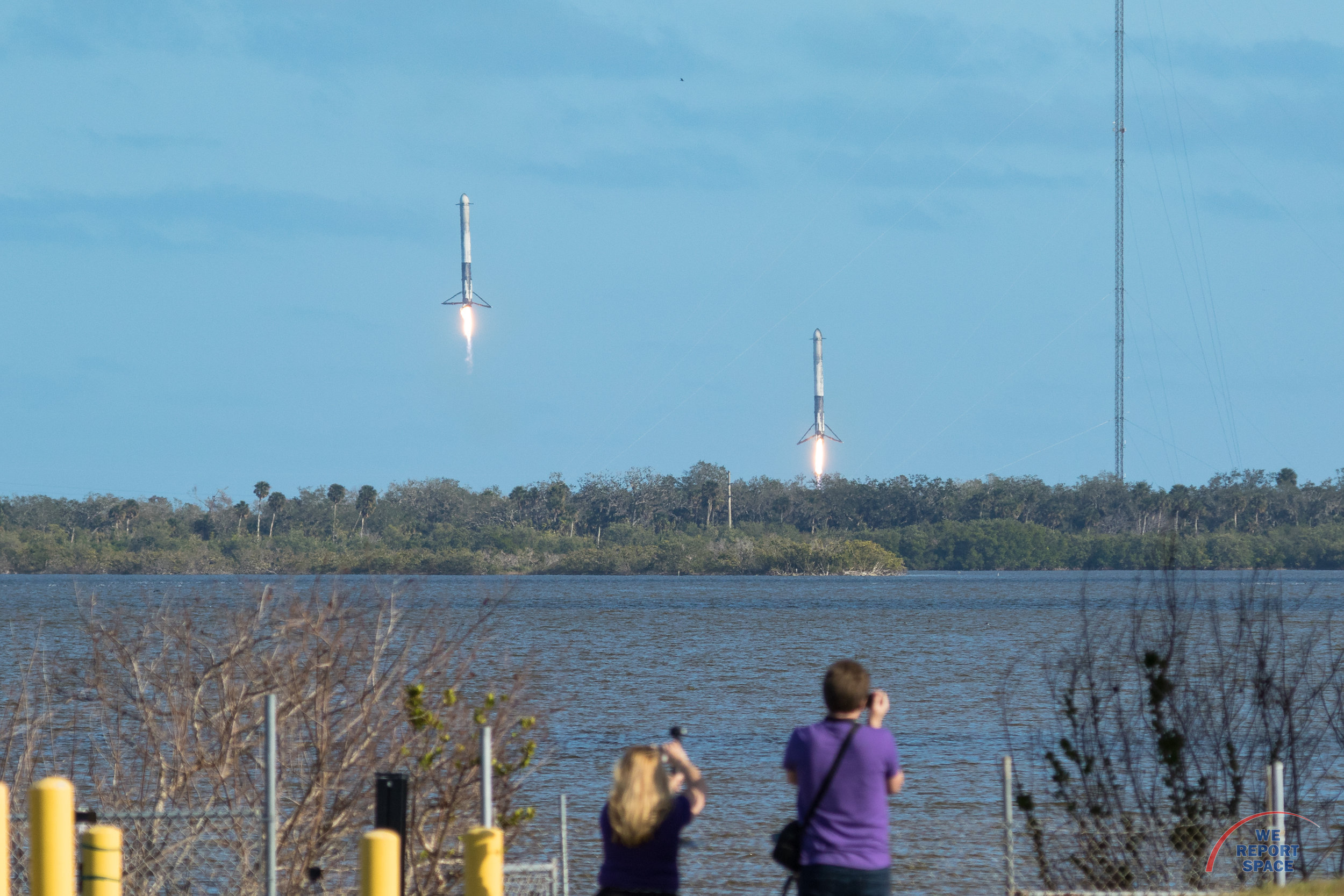
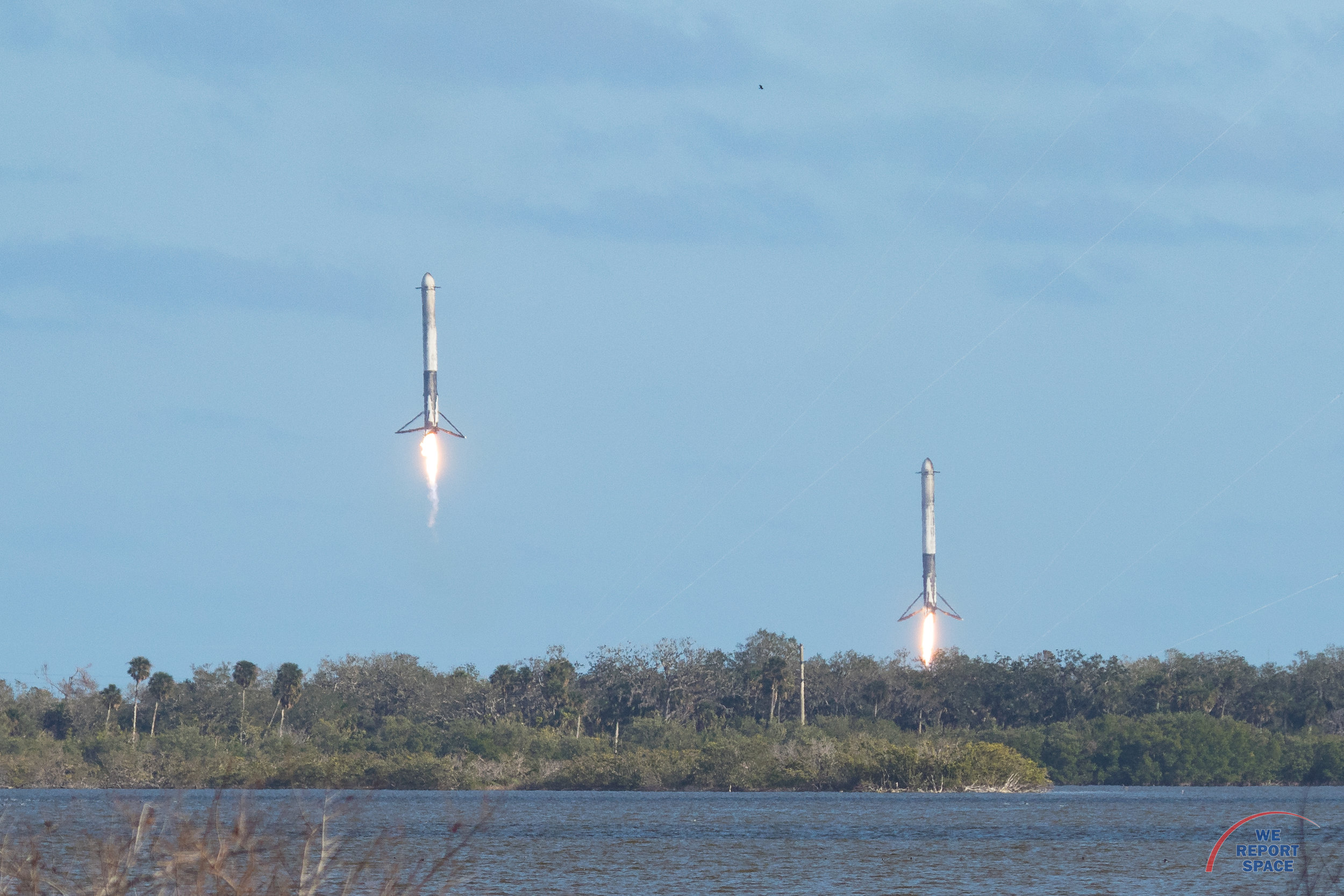
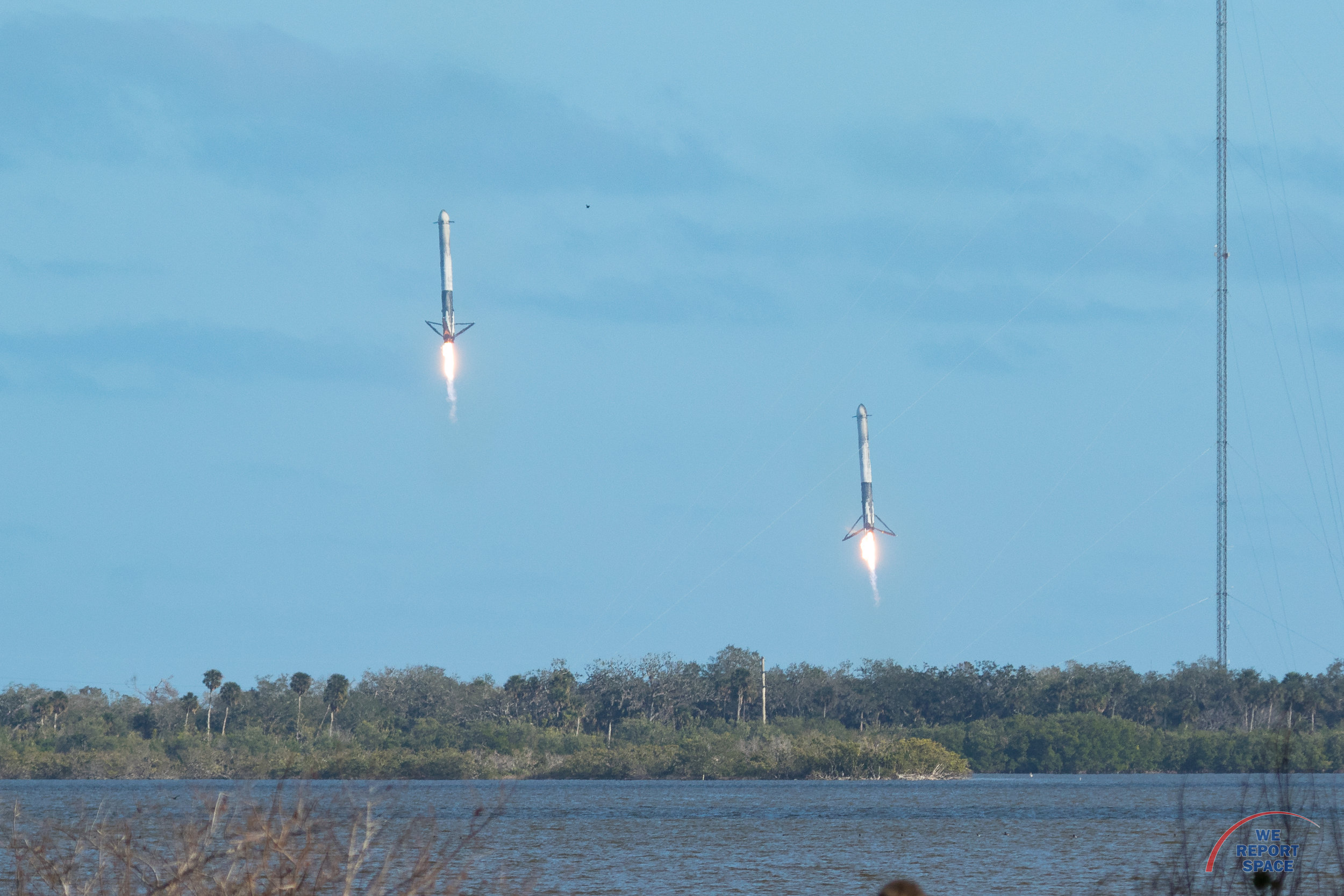

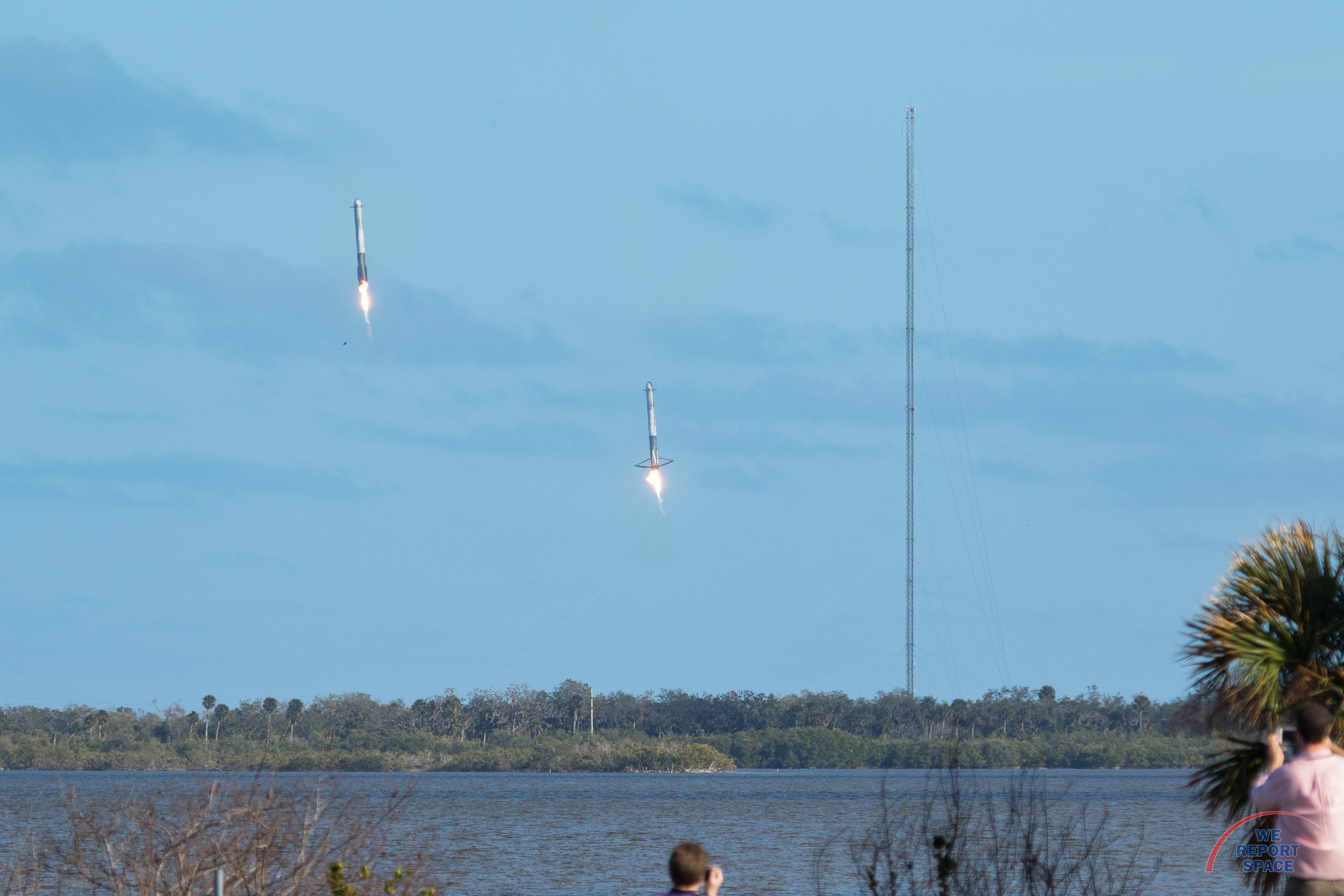
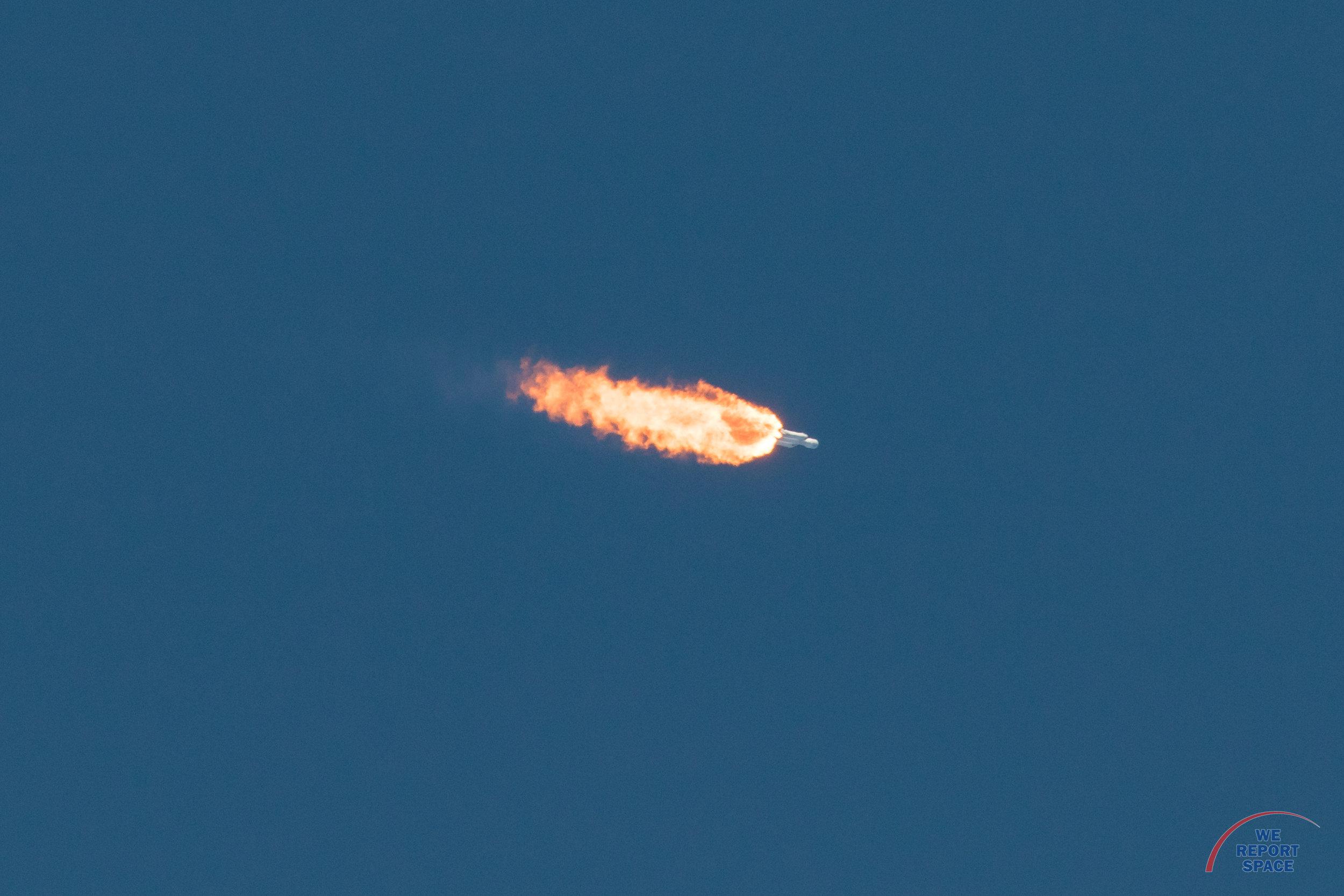
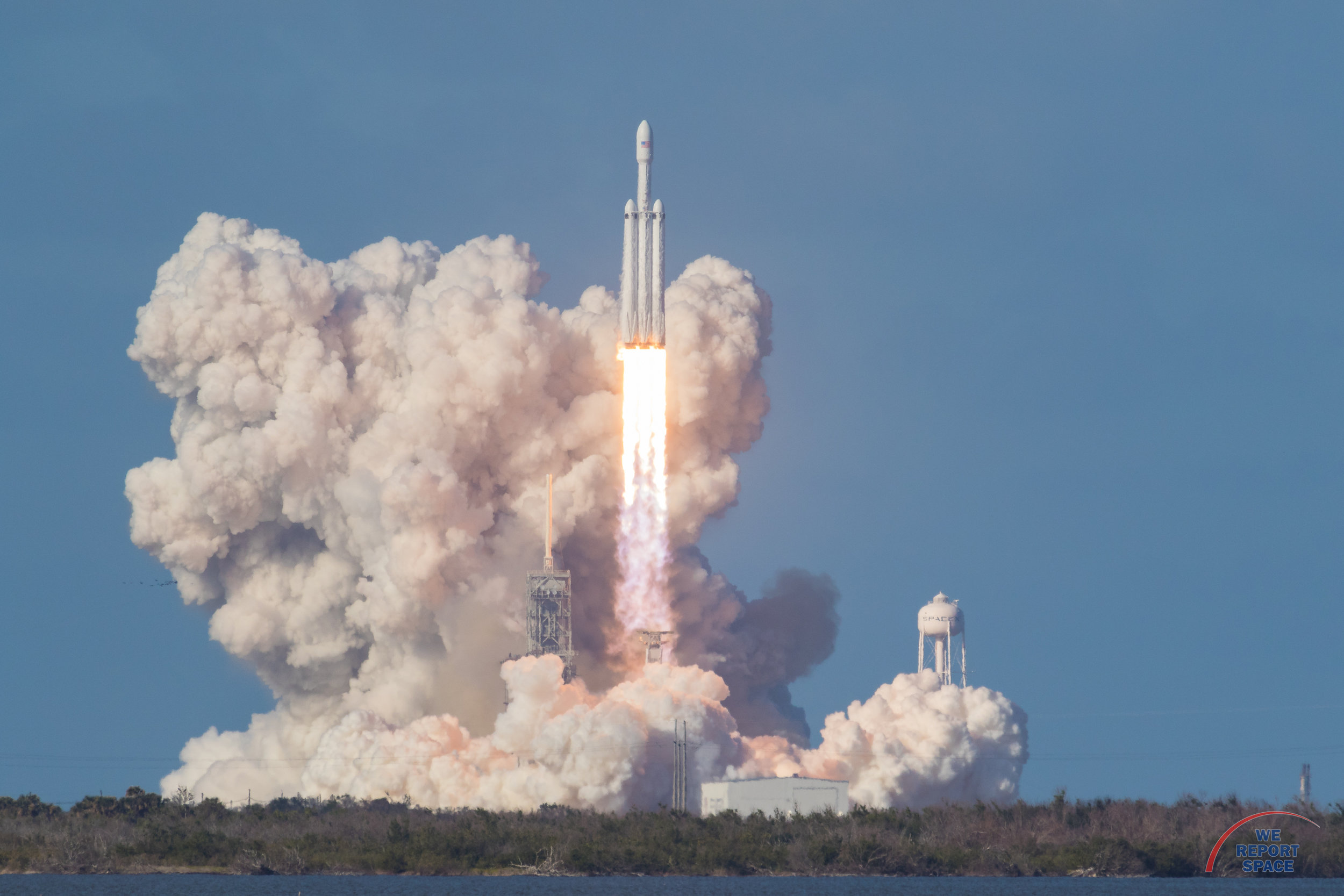
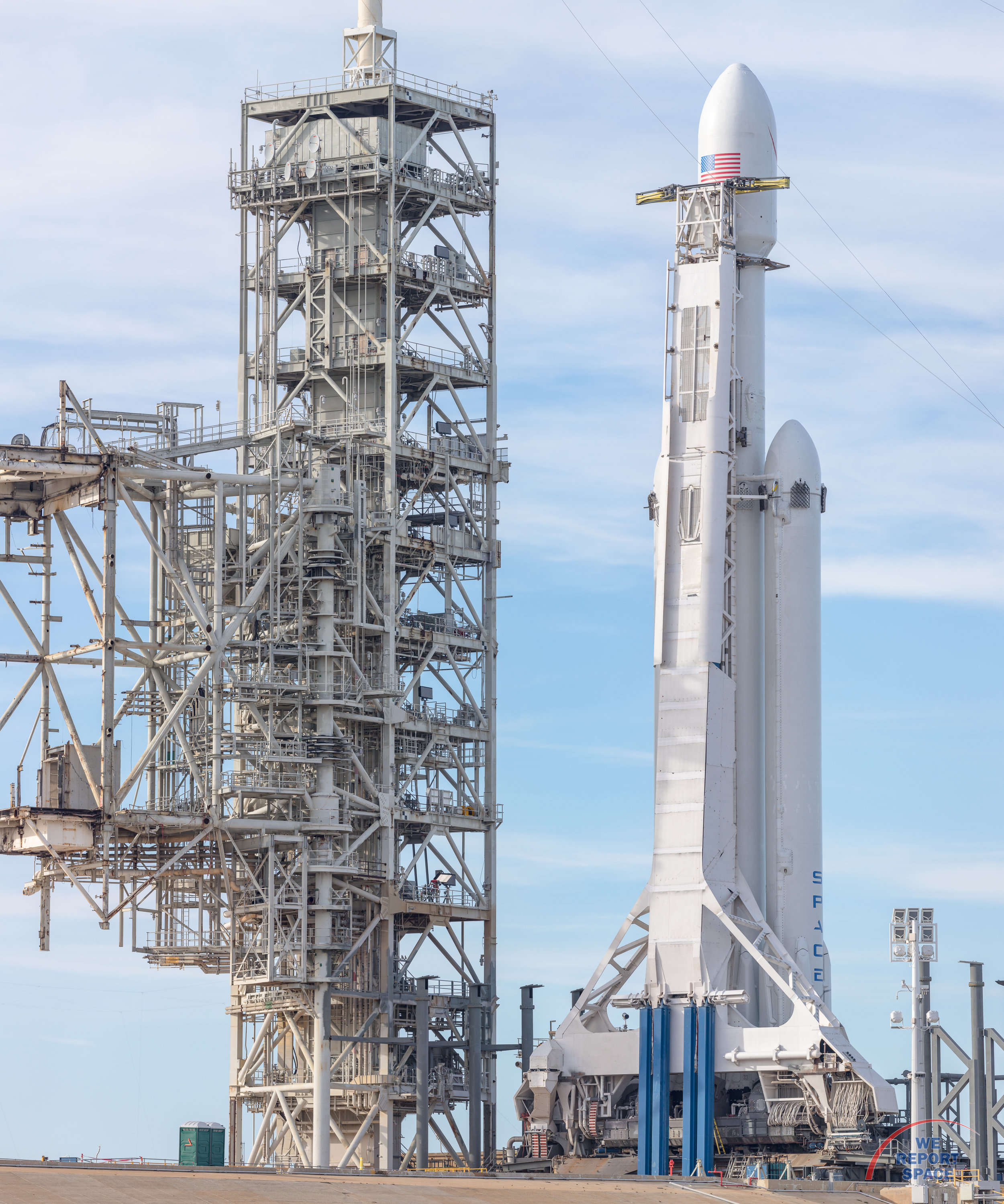
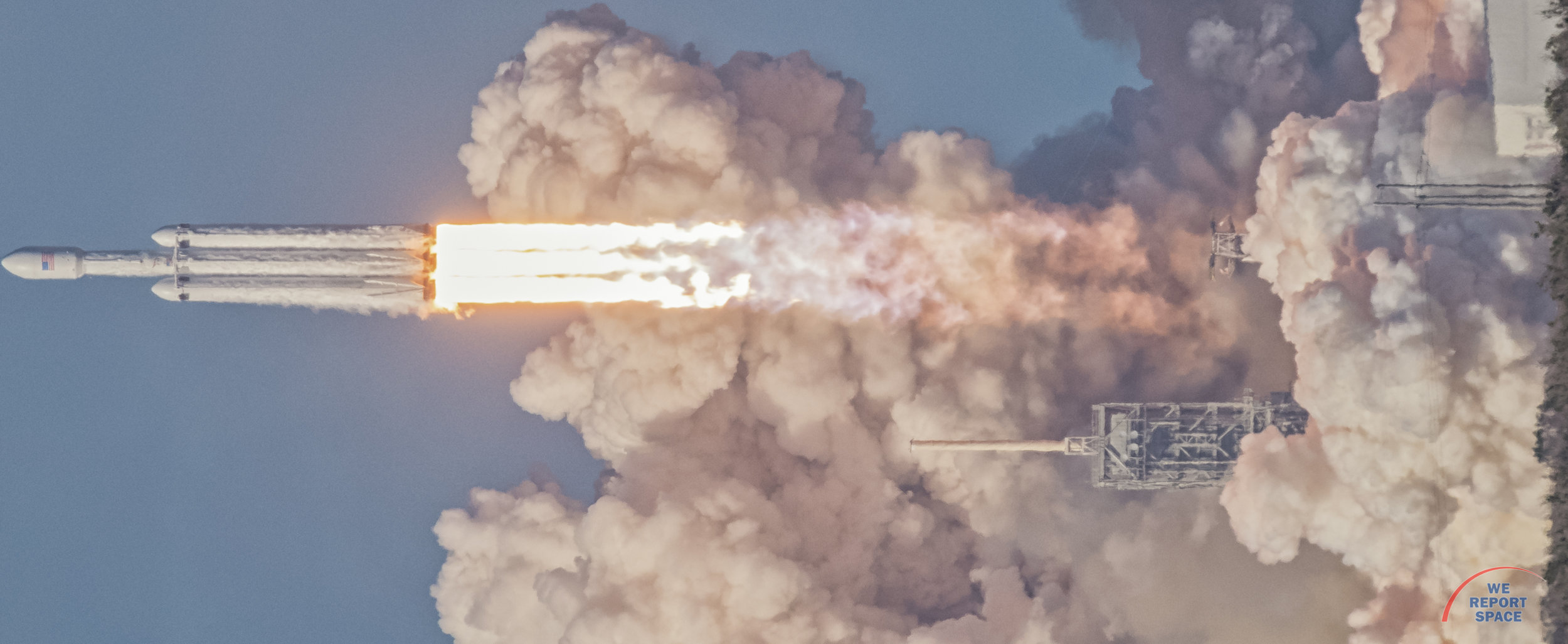
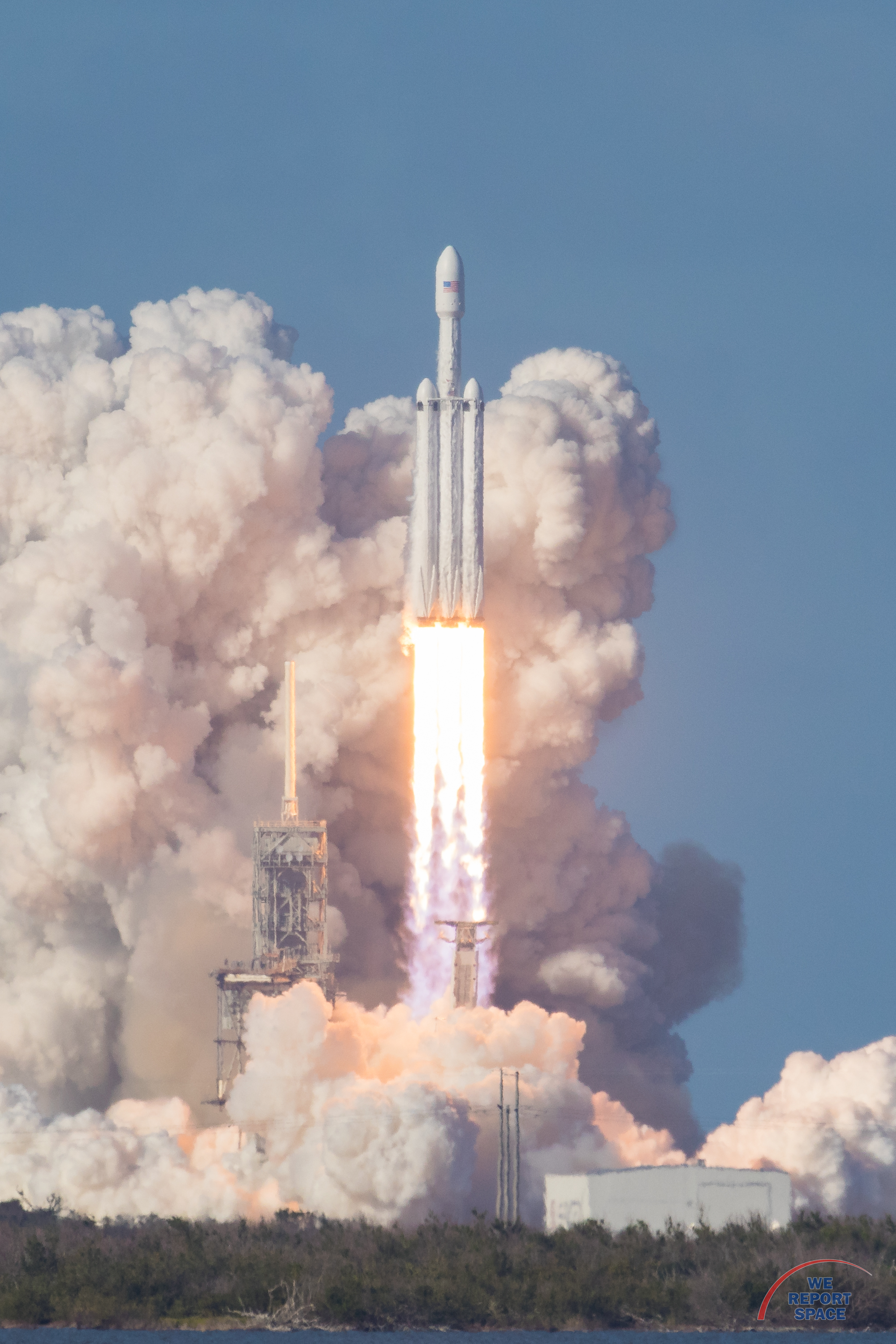
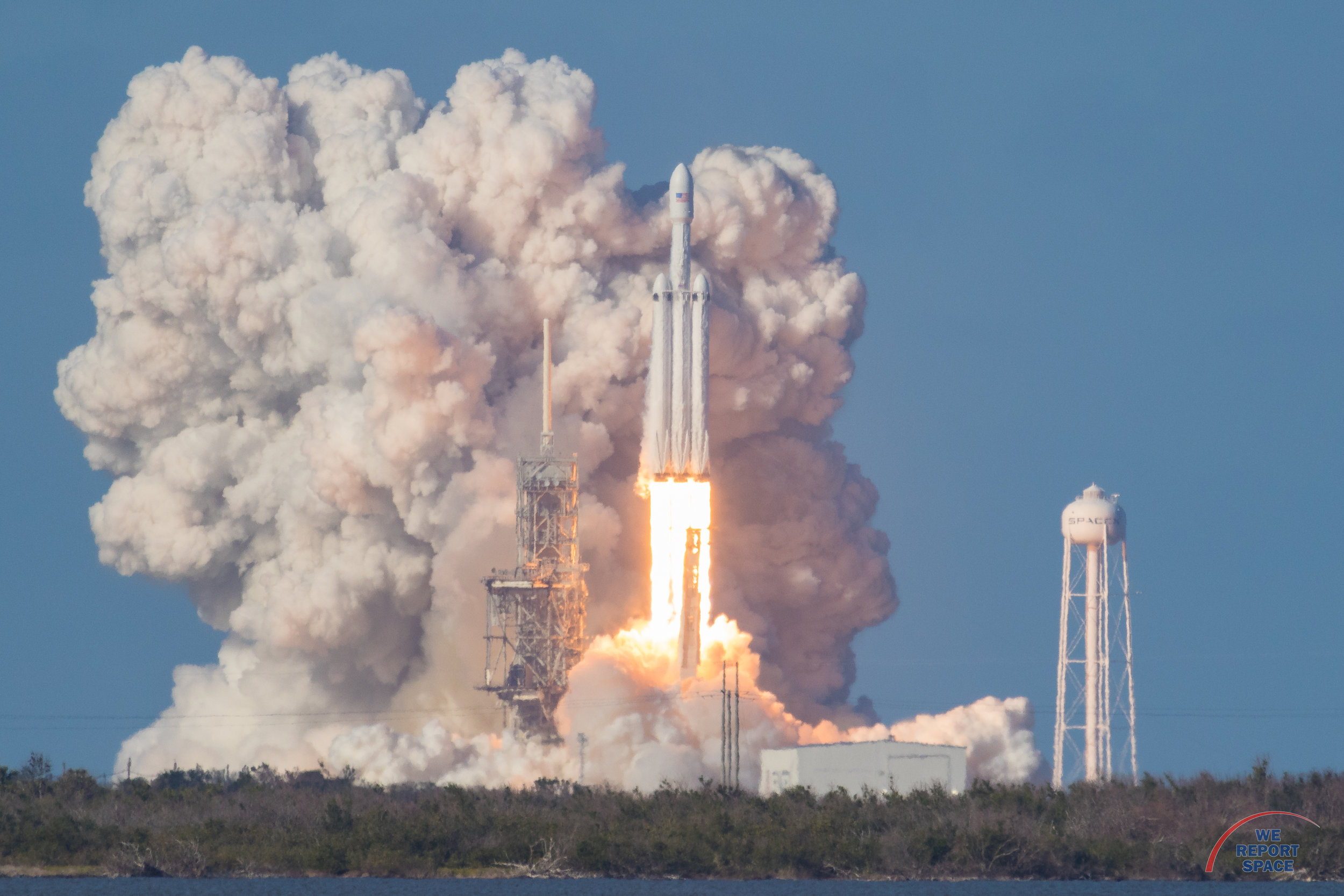
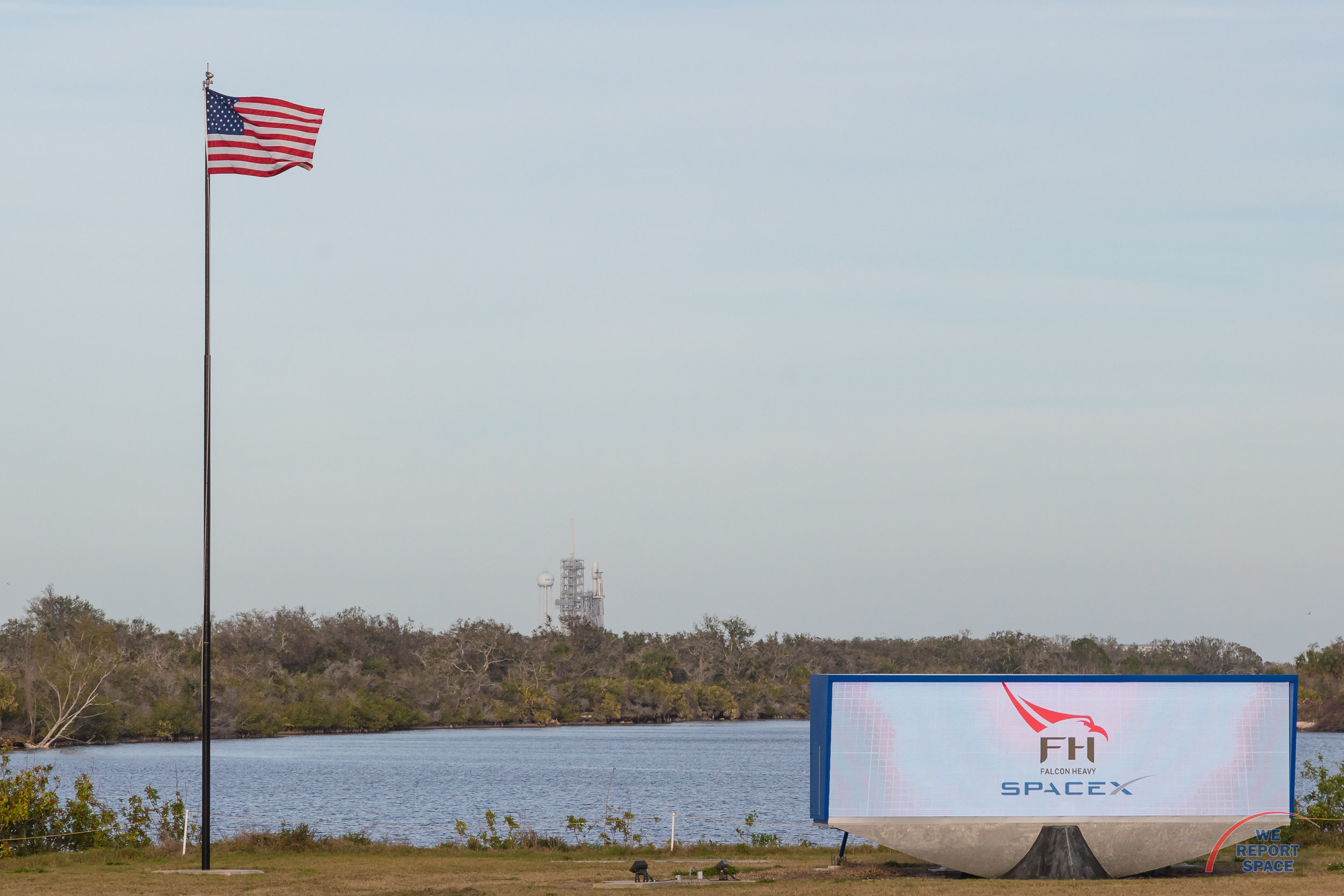
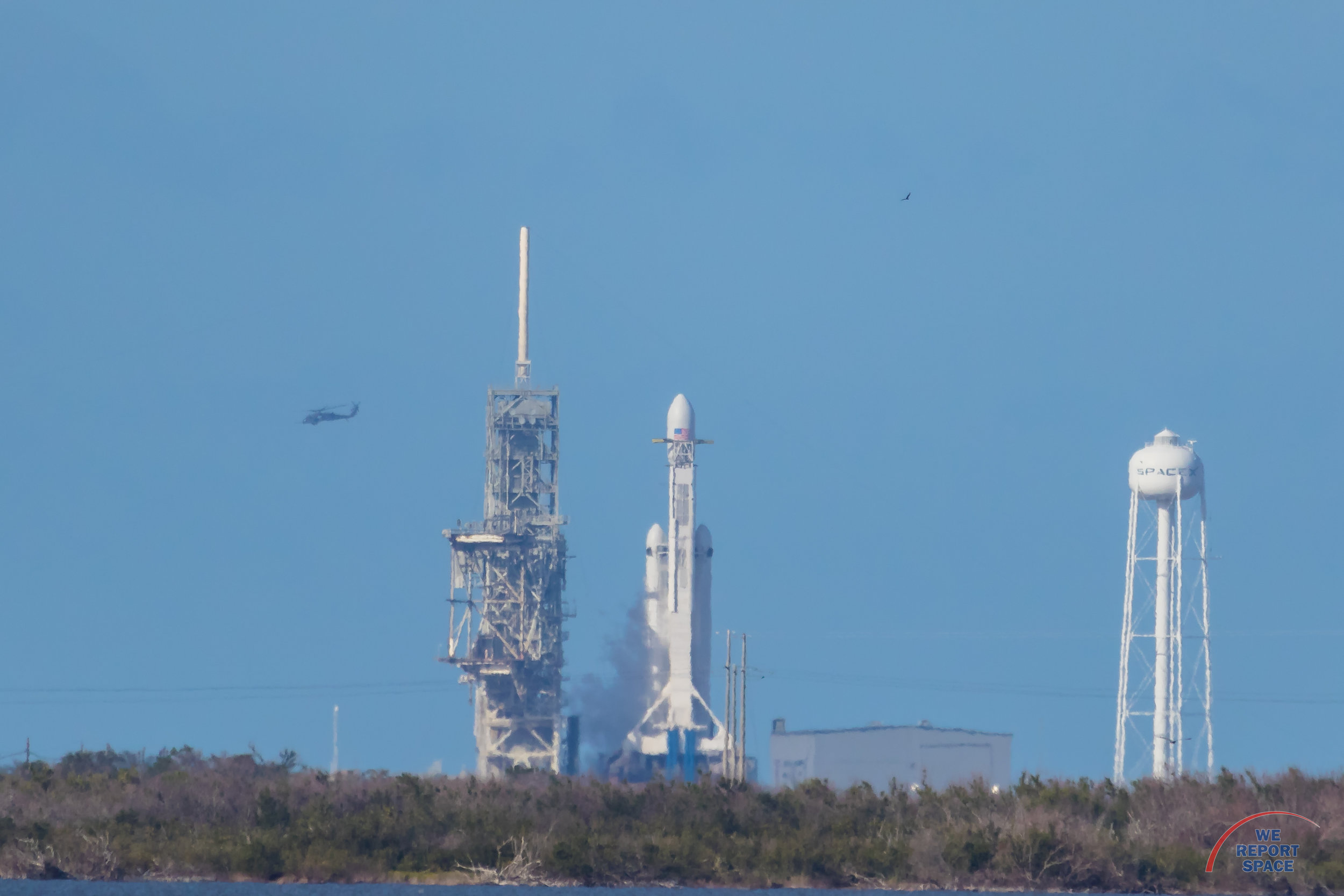
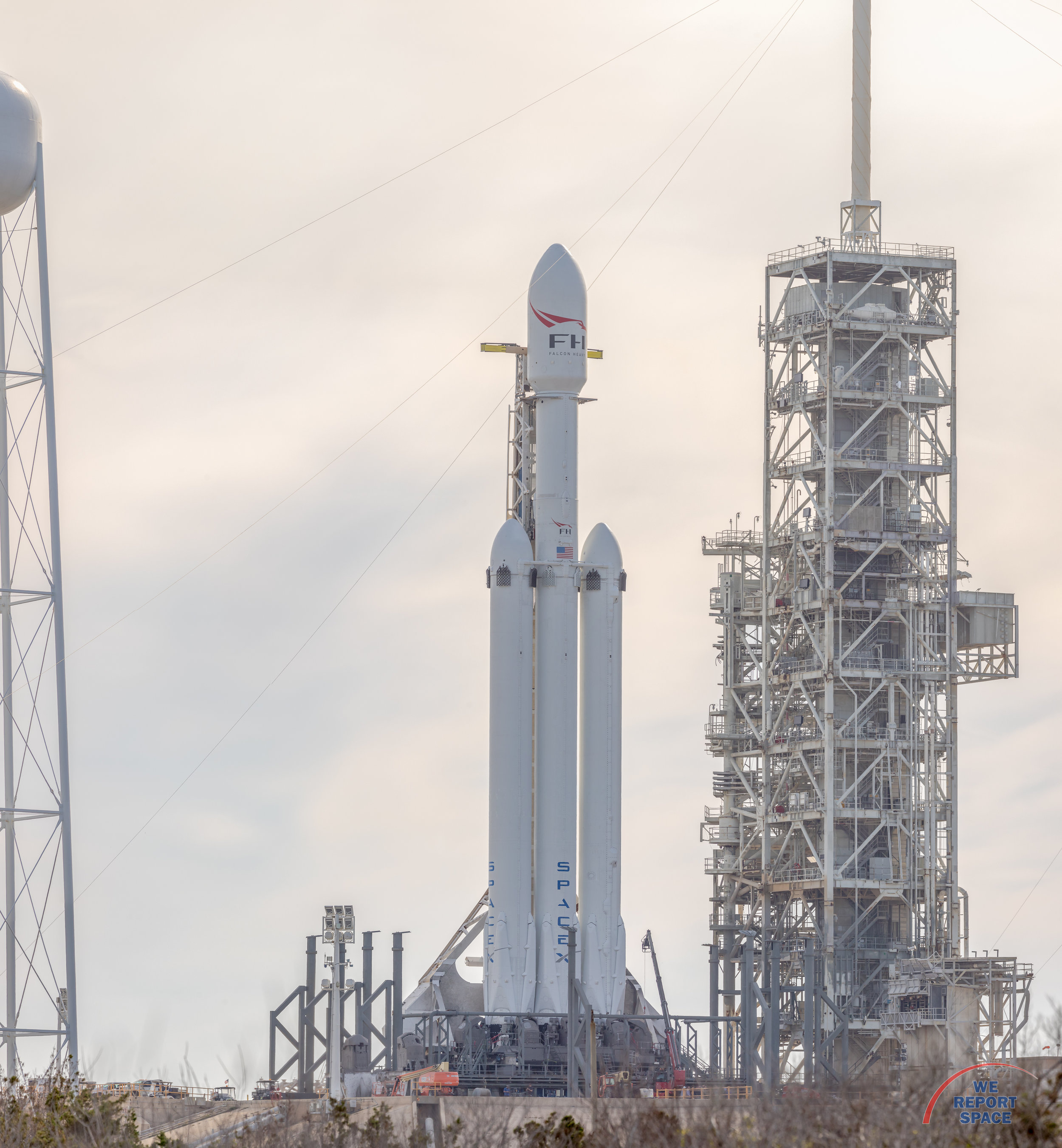
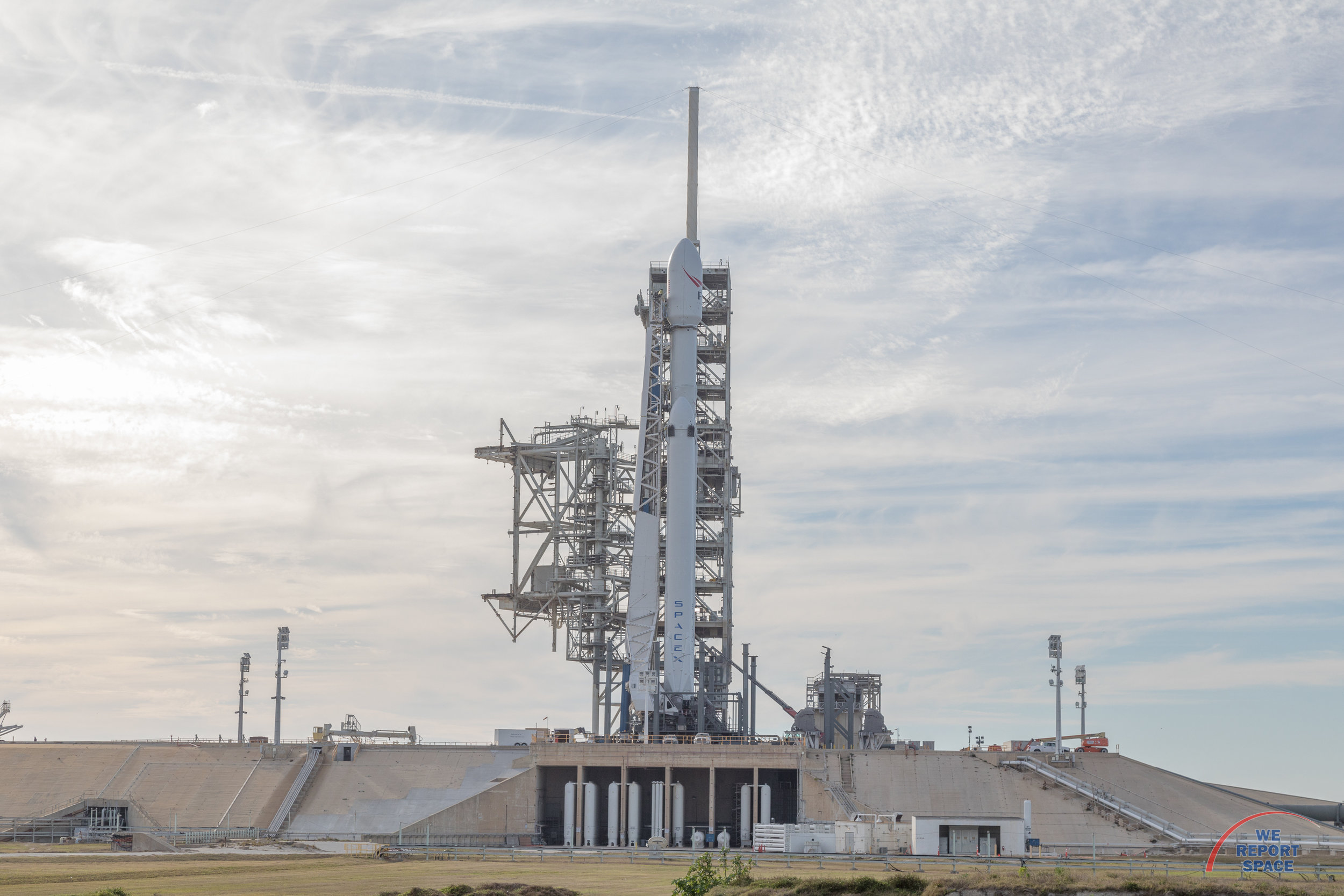
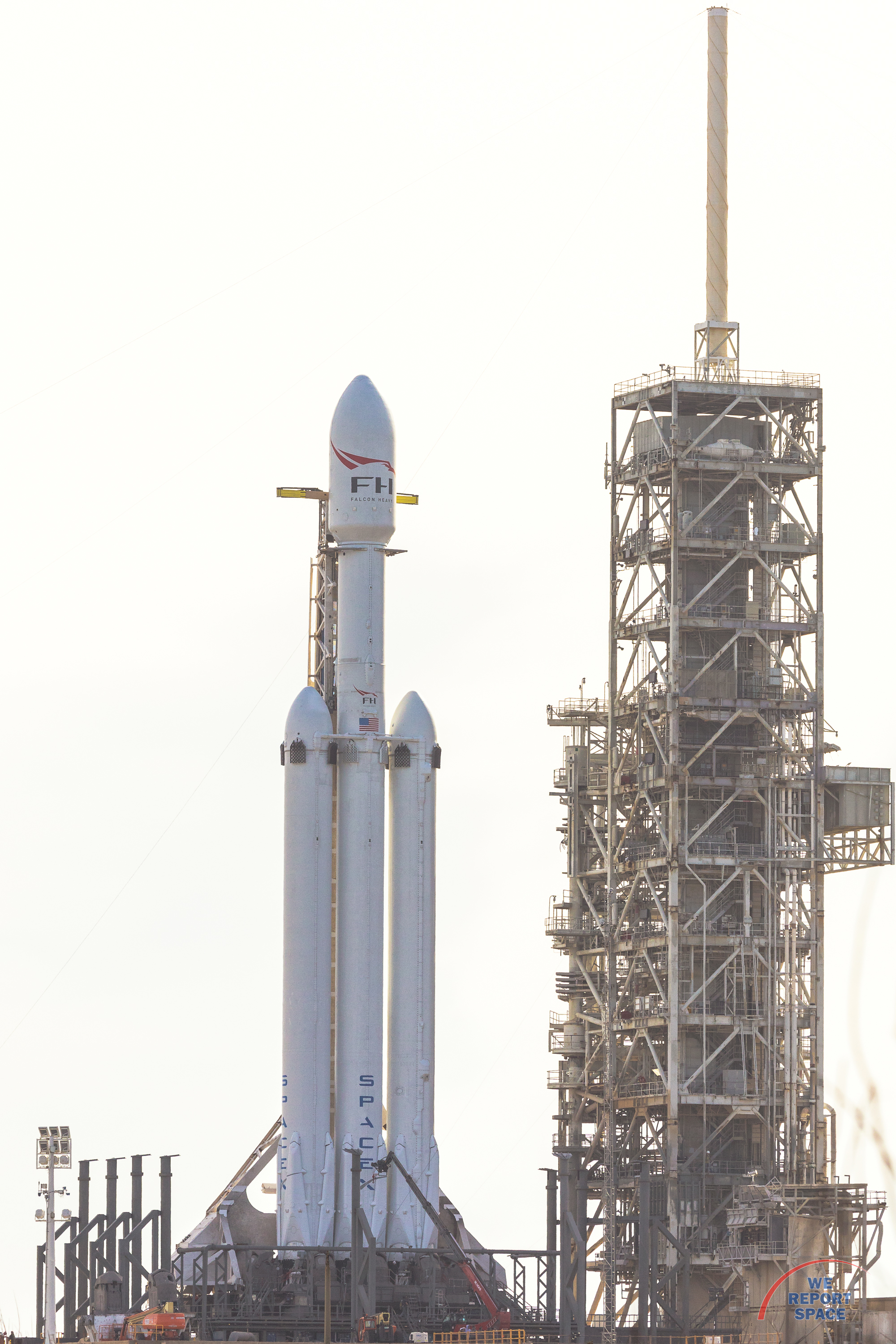
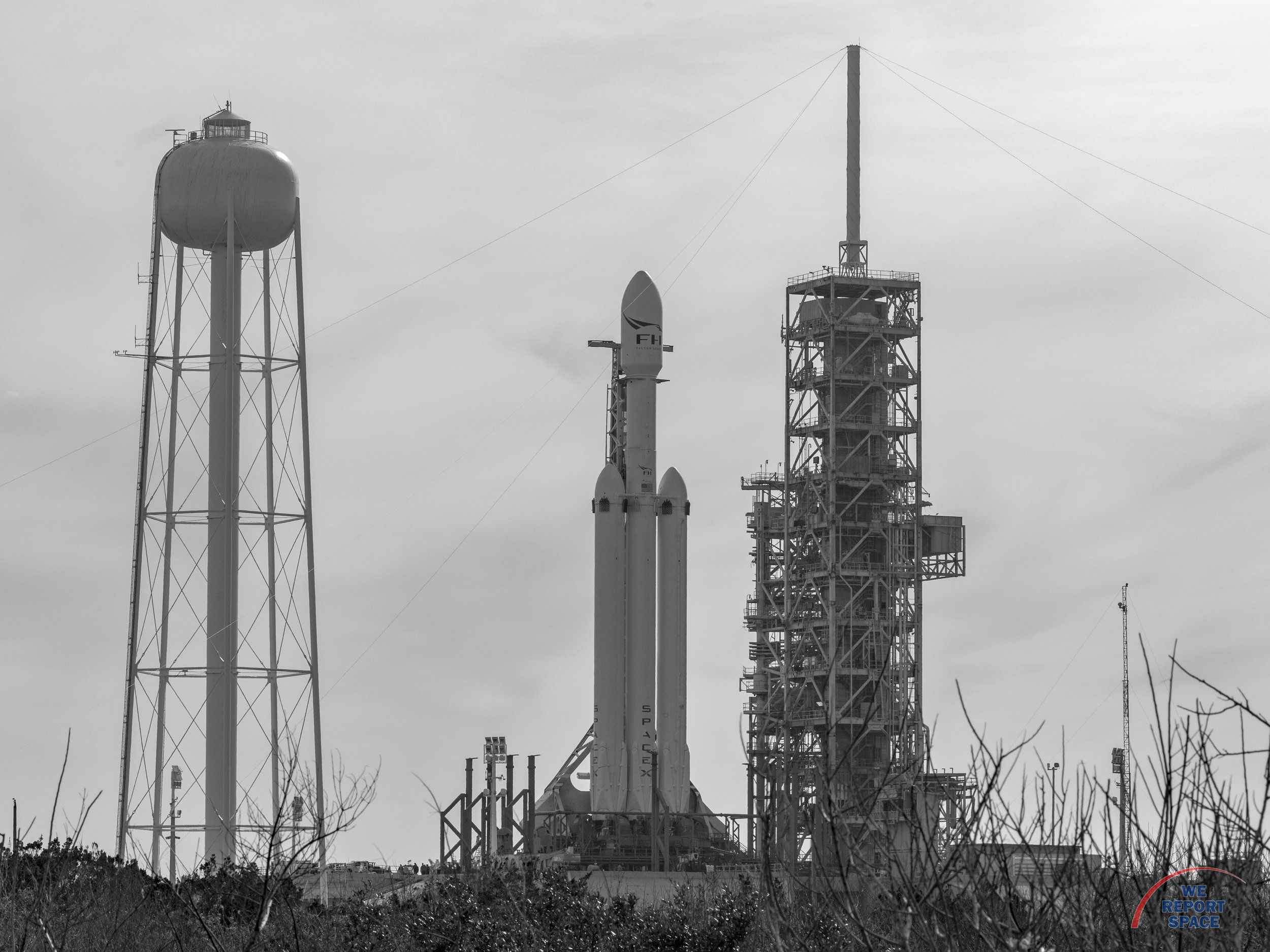
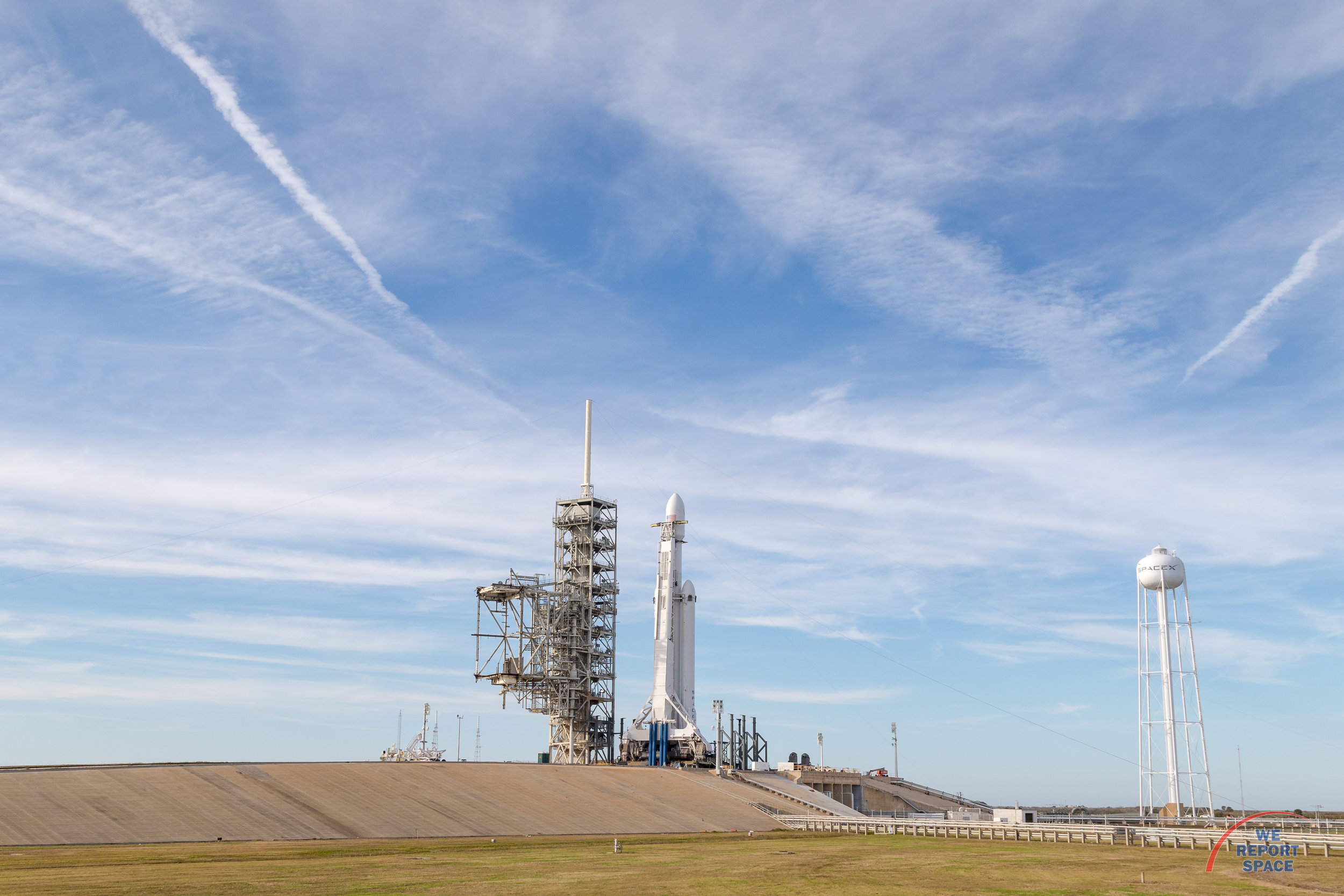

At 3:45pm (ET) SpaceX and Elon Musk successfully launched the Falcon Heavy rocket from historic Pad 39A at Nasa's Kennedy Space Center in Florida.. Approximately 8 minutes after launch, the two outer cores would return safely to SpaceX's Landing Zone 1 at Cape Canaveral Air Force Station. According to SpaceX CEO Elon Musk, the center core ran out of fuel needed to relight 3 engines for the re-entry burn. The core was unable to slow its descent and it crashed into the Atlantic Ocean at approximately 300 mph. Musk added that he was most interested in recovering the two outer cores, as they flew with titanium grid fins, which are very expensive to make.

At 3:45pm (ET) SpaceX and Elon Musk successfully launched the Falcon Heavy rocket from historic Pad 39A at Nasa's Kennedy Space Center in Florida.. Approximately 8 minutes after launch, the two outer cores would return safely to SpaceX's Landing Zone 1 at Cape Canaveral Air Force Station. According to SpaceX CEO Elon Musk, the center core ran out of fuel needed to relight 3 engines for the re-entry burn. The core was unable to slow its descent and it crashed into the Atlantic Ocean at approximately 300 mph. Musk added that he was most interested in recovering the two outer cores, as they flew with titanium grid fins, which are very expensive to make.

I'll probably revisit this edit at some point, but here is a quick sequence that shows the outer cores from the #SpaceX #FalconHeavy safely dscending to land at Cape Canaveral Air Force Station. This is a composite of 4 different frames. The right core descended first, follwed almost immediately thereafter by the left core. Complicating this composite is the fact that I was tracking the right core with a very tight zoom, thinking that the landings would not be simulatenous. When I realized I could get the rockets in the same frame, I quickly reframed to 250mm...and mid sequence, I reframed again to 235mm. Photoshop's auto-align feature handled it pretty well, but I'm not thrilled with the masking. Anyway, here it is. The whole thing was amazing, and I'm still a bit awestruck, so I'm having a hard time being too picky about the shots I got. (Photo by Michael Seeley / We Report Space)

I didn't spend much time on this shot in the moments after the #SpaceX #FalconHeavy launch (and landings!), but after revisiting it this morning, I find myself liking it a lot. The three bands in the streak are cool, as is the bend at the top of the frame as it heads out over the Atlantic. This edit adds some contrast (since that seems to be the thing for FH launch images) and in particular, more detail, so the 3-streaks are more discernable. And it's a vertical crop; my first version was still in landscape. Details: ISO100, 25-seconds, and f32 through a 70-200mm lens with a 10-stop ND filter on a Canon 5D4. Edits in Lightroom and Color Efex4 (detail extractor). (photo by Michael Seeley / We Report Space)

At 3:45pm (ET) SpaceX and Elon Musk successfully launched the Falcon Heavy rocket from historic Pad 39A at Nasa's Kennedy Space Center in Florida.. Approximately 8 minutes after launch, the two outer cores would return safely to SpaceX's Landing Zone 1 at Cape Canaveral Air Force Station. According to SpaceX CEO Elon Musk, the center core ran out of fuel needed to relight 3 engines for the re-entry burn. The core was unable to slow its descent and it crashed into the Atlantic Ocean at approximately 300 mph. Musk added that he was most interested in recovering the two outer cores, as they flew with titanium grid fins, which are very expensive to make.

At 3:45pm (ET) SpaceX and Elon Musk successfully launched the Falcon Heavy rocket from historic Pad 39A at Nasa's Kennedy Space Center in Florida.. Approximately 8 minutes after launch, the two outer cores would return safely to SpaceX's Landing Zone 1 at Cape Canaveral Air Force Station. According to SpaceX CEO Elon Musk, the center core ran out of fuel needed to relight 3 engines for the re-entry burn. The core was unable to slow its descent and it crashed into the Atlantic Ocean at approximately 300 mph. Musk added that he was most interested in recovering the two outer cores, as they flew with titanium grid fins, which are very expensive to make.

At 3:45pm (ET) SpaceX and Elon Musk successfully launched the Falcon Heavy rocket from historic Pad 39A at Nasa's Kennedy Space Center in Florida.. Approximately 8 minutes after launch, the two outer cores would return safely to SpaceX's Landing Zone 1 at Cape Canaveral Air Force Station. According to SpaceX CEO Elon Musk, the center core ran out of fuel needed to relight 3 engines for the re-entry burn. The core was unable to slow its descent and it crashed into the Atlantic Ocean at approximately 300 mph. Musk added that he was most interested in recovering the two outer cores, as they flew with titanium grid fins, which are very expensive to make.

At 3:45pm (ET) SpaceX and Elon Musk successfully launched the Falcon Heavy rocket from historic Pad 39A at Nasa's Kennedy Space Center in Florida.. Approximately 8 minutes after launch, the two outer cores would return safely to SpaceX's Landing Zone 1 at Cape Canaveral Air Force Station. According to SpaceX CEO Elon Musk, the center core ran out of fuel needed to relight 3 engines for the re-entry burn. The core was unable to slow its descent and it crashed into the Atlantic Ocean at approximately 300 mph. Musk added that he was most interested in recovering the two outer cores, as they flew with titanium grid fins, which are very expensive to make.

At 3:45pm (ET) SpaceX and Elon Musk successfully launched the Falcon Heavy rocket from historic Pad 39A at Nasa's Kennedy Space Center in Florida.. Approximately 8 minutes after launch, the two outer cores would return safely to SpaceX's Landing Zone 1 at Cape Canaveral Air Force Station. According to SpaceX CEO Elon Musk, the center core ran out of fuel needed to relight 3 engines for the re-entry burn. The core was unable to slow its descent and it crashed into the Atlantic Ocean at approximately 300 mph. Musk added that he was most interested in recovering the two outer cores, as they flew with titanium grid fins, which are very expensive to make.

At 3:45pm (ET) SpaceX and Elon Musk successfully launched the Falcon Heavy rocket from historic Pad 39A at Nasa's Kennedy Space Center in Florida.. Approximately 8 minutes after launch, the two outer cores would return safely to SpaceX's Landing Zone 1 at Cape Canaveral Air Force Station. According to SpaceX CEO Elon Musk, the center core ran out of fuel needed to relight 3 engines for the re-entry burn. The core was unable to slow its descent and it crashed into the Atlantic Ocean at approximately 300 mph. Musk added that he was most interested in recovering the two outer cores, as they flew with titanium grid fins, which are very expensive to make.

At 3:45pm (ET) SpaceX and Elon Musk successfully launched the Falcon Heavy rocket from historic Pad 39A at Nasa's Kennedy Space Center in Florida.. Approximately 8 minutes after launch, the two outer cores would return safely to SpaceX's Landing Zone 1 at Cape Canaveral Air Force Station. According to SpaceX CEO Elon Musk, the center core ran out of fuel needed to relight 3 engines for the re-entry burn. The core was unable to slow its descent and it crashed into the Atlantic Ocean at approximately 300 mph. Musk added that he was most interested in recovering the two outer cores, as they flew with titanium grid fins, which are very expensive to make.

Pictures taken of the SpaceX Falcon Heavy rocket during remote camera setup for members of the media on February 5, 2018. The rocket is scheduled for launch, the first ever for the Falcon Heavy, at 1:30pm (ET) on Tuesday, February 6, 2018. (Photos by Michael Seeley / We Report Space)

At 3:45pm (ET) SpaceX and Elon Musk successfully launched the Falcon Heavy rocket from historic Pad 39A at Nasa's Kennedy Space Center in Florida.. Approximately 8 minutes after launch, the two outer cores would return safely to SpaceX's Landing Zone 1 at Cape Canaveral Air Force Station. According to SpaceX CEO Elon Musk, the center core ran out of fuel needed to relight 3 engines for the re-entry burn. The core was unable to slow its descent and it crashed into the Atlantic Ocean at approximately 300 mph. Musk added that he was most interested in recovering the two outer cores, as they flew with titanium grid fins, which are very expensive to make.

At 3:45pm (ET) SpaceX and Elon Musk successfully launched the Falcon Heavy rocket from historic Pad 39A at Nasa's Kennedy Space Center in Florida.. Approximately 8 minutes after launch, the two outer cores would return safely to SpaceX's Landing Zone 1 at Cape Canaveral Air Force Station. According to SpaceX CEO Elon Musk, the center core ran out of fuel needed to relight 3 engines for the re-entry burn. The core was unable to slow its descent and it crashed into the Atlantic Ocean at approximately 300 mph. Musk added that he was most interested in recovering the two outer cores, as they flew with titanium grid fins, which are very expensive to make.

Pictures taken of the SpaceX Falcon Heavy rocket during remote camera setup for members of the media on February 5, 2018. The rocket is scheduled for launch, the first ever for the Falcon Heavy, at 1:30pm (ET) on Tuesday, February 6, 2018. (Photos by Michael Seeley / We Report Space)

Pictures taken of the SpaceX Falcon Heavy rocket during remote camera setup for members of the media on February 5, 2018. The rocket is scheduled for launch, the first ever for the Falcon Heavy, at 1:30pm (ET) on Tuesday, February 6, 2018. (Photos by Michael Seeley / We Report Space)

Pictures taken of the SpaceX Falcon Heavy rocket during remote camera setup for members of the media on February 5, 2018. The rocket is scheduled for launch, the first ever for the Falcon Heavy, at 1:30pm (ET) on Tuesday, February 6, 2018. (Photos by Michael Seeley / We Report Space)

Pictures taken of the SpaceX Falcon Heavy rocket during remote camera setup for members of the media on February 5, 2018. The rocket is scheduled for launch, the first ever for the Falcon Heavy, at 1:30pm (ET) on Tuesday, February 6, 2018. (Photos by Michael Seeley / We Report Space)

Pictures taken of the SpaceX Falcon Heavy rocket during remote camera setup for members of the media on February 5, 2018. The rocket is scheduled for launch, the first ever for the Falcon Heavy, at 1:30pm (ET) on Tuesday, February 6, 2018. (Photos by Michael Seeley / We Report Space)

Pictures taken of the SpaceX Falcon Heavy rocket during remote camera setup for members of the media on February 5, 2018. The rocket is scheduled for launch, the first ever for the Falcon Heavy, at 1:30pm (ET) on Tuesday, February 6, 2018. (Photos by Michael Seeley / We Report Space)
